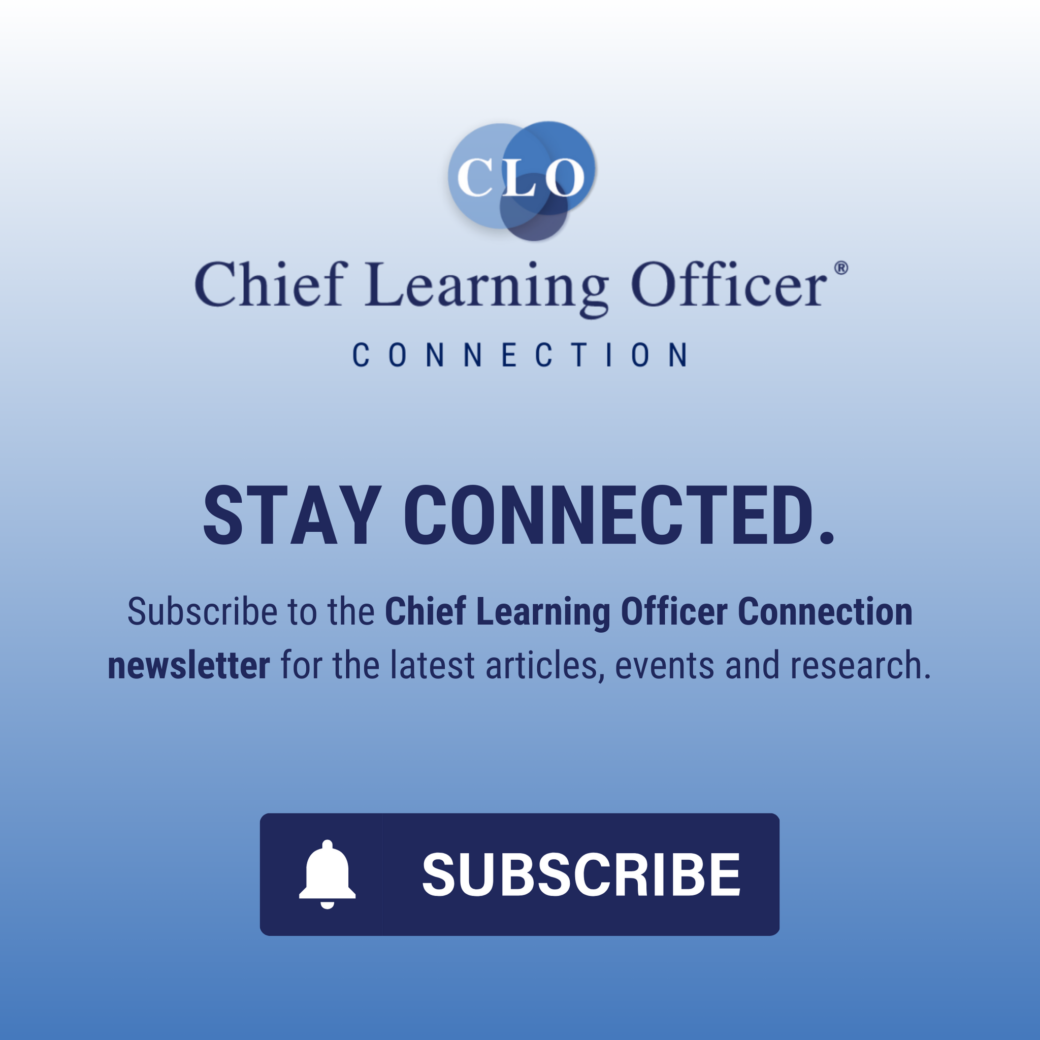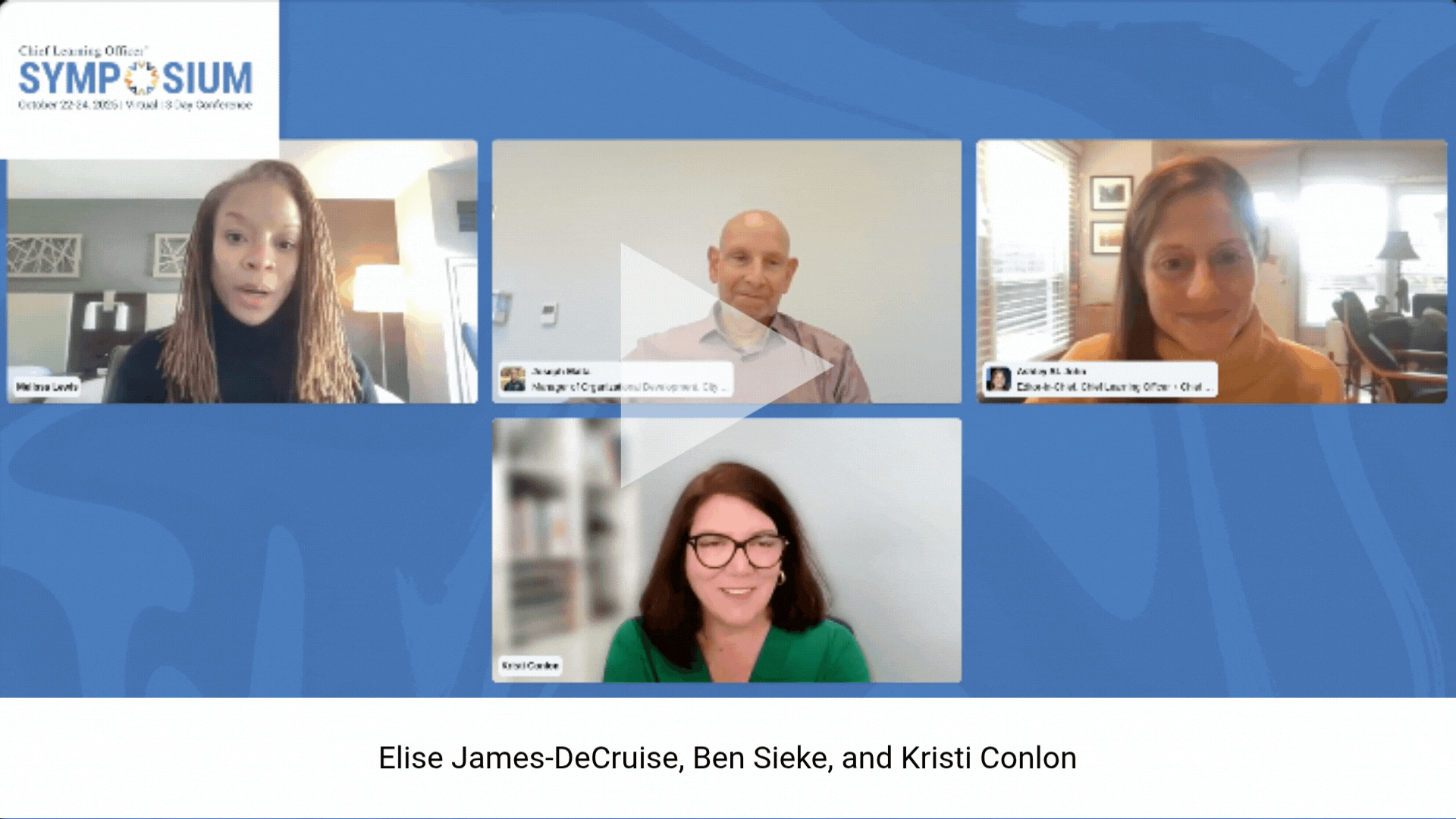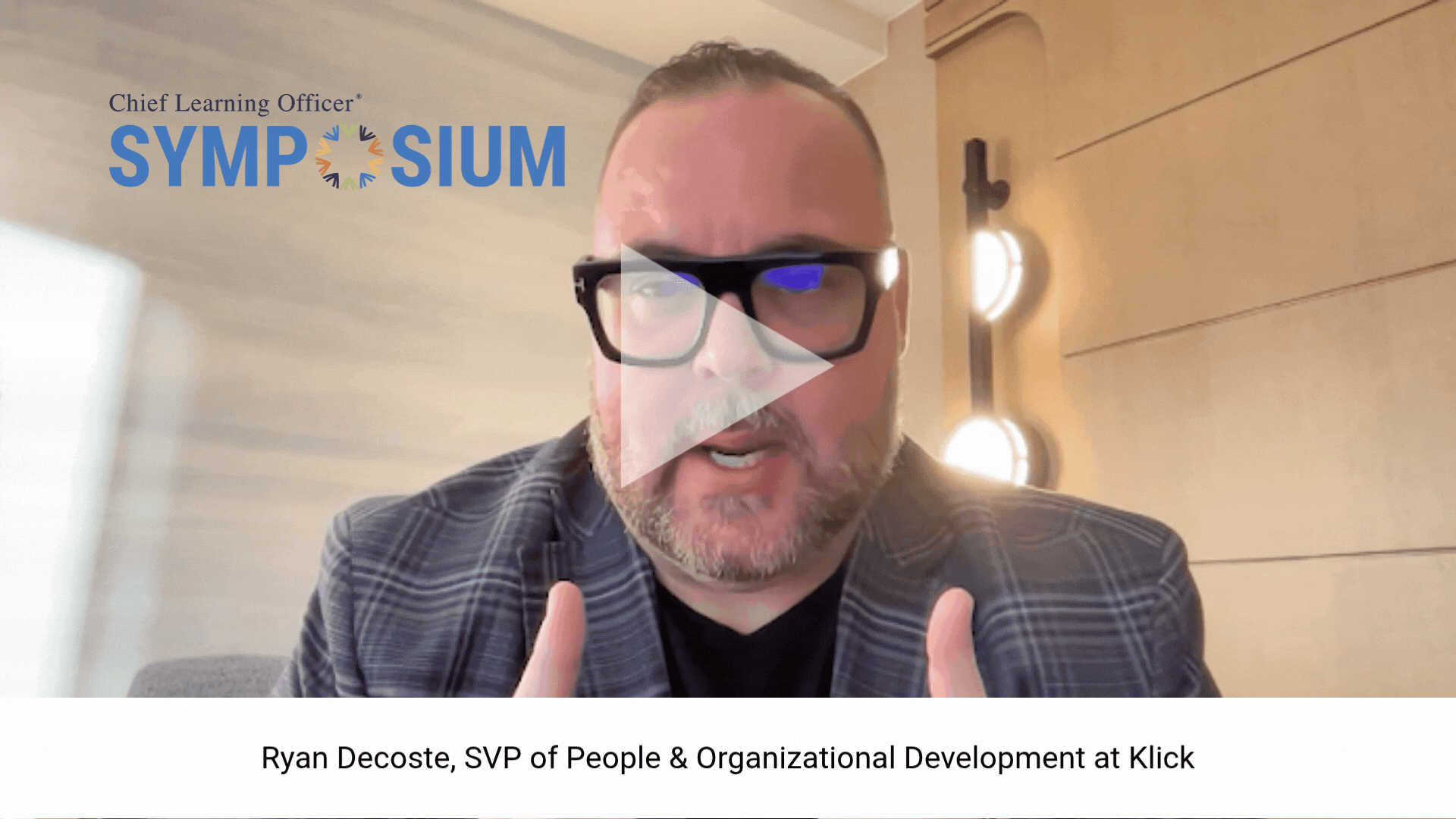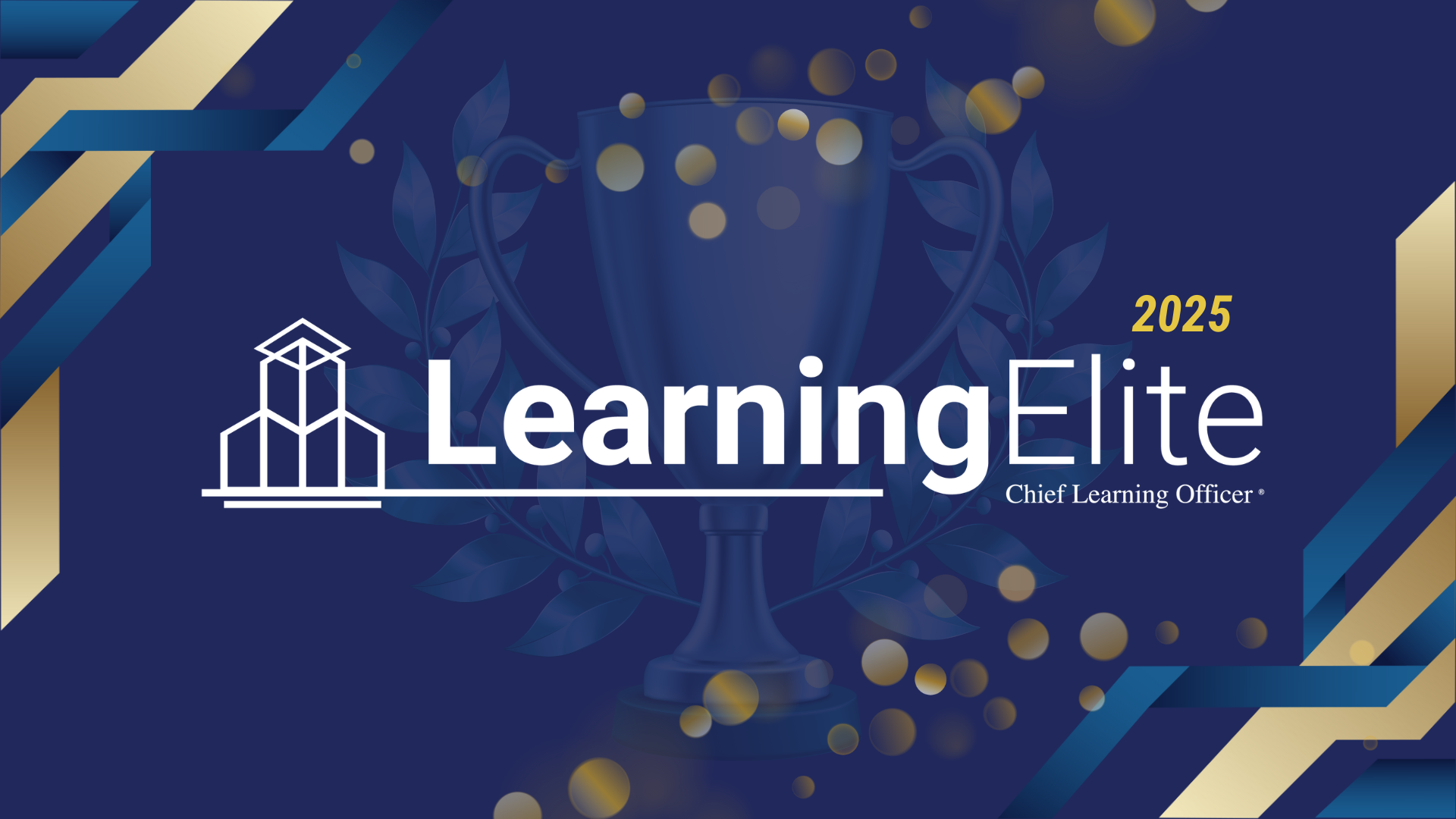The learning and development function is at a pivotal crossroads. Once viewed as a support mechanism for compliance and onboarding, L&D is now being called upon to become a strategic enabler of business transformation or lose its value entirely.
This evolution is not just urgent; it is inevitable. The history of L&D as a peripheral function is evaporating. If we, as learning leaders, don’t rise to the challenge, the value of the learning function will erode through aggressive cost-containment. What we need to do next is transform — dramatically. We have to become the competitive advantage that organizations will need to respond to in this increasingly volatile world.
How Does L&D Retain Value?
Emphasizing human + AI workflows
AI is revolutionizing L&D by accelerating content creation, personalizing learning experiences and enhancing analytics, but the human element remains essential. A human + AI approach ensures that learning is not only efficient but also ethical, engaging and strategically aligned with organizational goals.
L&D professionals must now evolve their workflows to integrate AI responsibly. This means:
- Supervising AI outputs.
- Selecting and preparing data.
- Evaluating results.
Tools like CoPilot or Otter.ai can summarize raw SME interviews, but AI can’t capture nuance and implied insights. Humans need to bring the wisdom of their lived experiences to the table. As we use AI more to generate learning content, human oversight is still necessary to ensure relevance and quality. An iterative loop of human review and AI augmentation is central to responsible and effective learning design.
The synergy between human insight and AI capabilities enables L&D teams to shift focus from repetitive tasks to higher-value activities like creativity, critical thinking and emotional intelligence. Harvard Business School professor Karim R. Lakhani says it best: AI won’t replace humans, but humans with AI will replace humans without it.
L&D professionals need to develop AI fluency and strategically embed AI into their workflows. And L&D teams that embrace this shift will be better positioned to deliver scalable, personalized and impactful learning experiences, ensuring their continued relevance and strategic value.
Moving from content delivery to performance enablement
Learning functions also need to shift from simply delivering content to enabling performance. This transition reflects a growing emphasis on real-world application, continuous learning and adaptive learning paths that respond to individual needs. As highlighted in the British Council’s report, Key L&D Trends for Future Success: The 2024 Learning and Development Roadmap, L&D is no longer a support function but a strategic driver of business outcomes.
Core practices for performance enablement:
- Prioritize learning in the flow of work. This approach integrates learning into daily tasks, making it more relevant and actionable. It supports productivity, agility and ongoing upskilling — key components of performance enablement.
- Align L&D initiatives with organizational goals. Doing so ensures that learning investments directly contribute to strategic priorities and measurable impact.
- Emphasize personalization. Mapping learning to employees’ career paths and offering cross-functional experiences not only enhances engagement but also builds internal capabilities. This targeted approach helps organizations retain talent and prepare future leaders, particularly as Gen Z continues to establish itself in the workforce with expectations for personalized, purpose-driven development.
- Develop new capabilities. The British Council report also identifies adaptability, strategic thinking, digital fluency, data analytics and AI literacy as essential skills. Focusing on these competencies can enable L&D teams to design personalized, data-driven learning experiences that go beyond content delivery to truly enable performance.
Proving value
As the L&D function evolves, so does the expectation to demonstrate its tangible impact. According to McKinsey, measurement and analytics are no longer optional — they are foundational to proving L&D’s value and guiding its continuous improvement. To remain relevant and well-resourced, L&D must show how its efforts contribute directly to business outcomes.
This requires more than tracking participation rates or course completions. L&D teams must embed learning into the flow of work and use data to assess how learning initiatives influence performance, productivity and strategic goals. When learning is aligned with business priorities and supported by robust governance, it becomes a lever for organizational growth, not just employee development.
McKinsey highlights that while many companies (60 percent) plan to increase their L&D budgets and expand training hours (66 percent), these investments are contingent on L&D’s ability to demonstrate measurable results. Organizations are looking for evidence that learning initiatives drive capability building, support transformation and deliver return on investment.
To meet this demand, L&D leaders must adopt a more strategic mindset — one that:
- Integrates data.
- Aligns with talent and business strategies.
- Embraces a culture of accountability.
In doing so, L&D not only secures its place at the table but also proves its role as a catalyst for enterprise-wide success.
Structural evolution
To remain relevant and impactful, the learning function must also undergo a structural transformation, one that reimagines its operating model, governance, mindsets and technology infrastructure. This evolution is about building a connected, agile learning ecosystem that can scale with organizational growth and respond dynamically to business needs.
Following are structural shifts for a modern L&D function:
Enabling enterprise-wide collaboration: Learning organizations need to create a structure that balances enterprise-wide consistency with local flexibility. The key is in how the culture shifts — this is not about command and control; it’s about advocacy, enablement and learner centricity.
Governance: Two features that can power a transformation like this but need rethinking are traditional centers of excellence and communities of practice. These functions can help drive shared standards, enable innovation and foster collaboration across business units. A hub-and-spoke governance structure ensures transparency, accountability and alignment with strategic priorities, while empowering teams to tailor learning experiences to their unique contexts.
Technology: Technology plays a critical role in this evolution, too. Our roadmap calls for modernizing the learning tech stack with:
- AI-enabled tools.
- Digital asset management systems.
- Adaptive learning platforms.
- Real-time data analytics.
These tools support personalized, in-the-flow-of-work learning and data collection to measure impact and guide decision-making. Governance must precede technology adoption to avoid fragmentation and ensure sustainable innovation.
Mindset: Finally, the structural shift requires a mindset change. L&D teams must embrace agile ways of working, upskill in areas like prompt engineering and data strategy and reimagine workflows to integrate human + AI collaboration. This transformation positions L&D not just as a service provider, but as a strategic enabler of performance, growth and organizational resilience.
Making the strategic shift: L&D as a catalyst for business transformation
The future of L&D functions lies in the ability to evolve from a support function into a strategic engine for business transformation. This requires a fundamental shift — from delivering training in isolation to embedding learning deeply within the fabric of the organization. L&D must align with business outcomes, integrate with HR and talent strategies, and operate with a clear focus on performance, agility and measurable impact.
This transformation demands more than new tools. It calls for a new enterprise-wide mindset. An integrated approach, where L&D, HR and business leaders co-own the learning agenda, enables organizations to scale capability development in smarter, more sustainable ways. When learning is tied to how organizations attract, onboard, develop and retain talent, it becomes a lever for adaptability and growth.
When L&D is reimagined and empowered, it becomes a force multiplier — building resilient, future-ready workforces and unlocking new levels of performance.

















